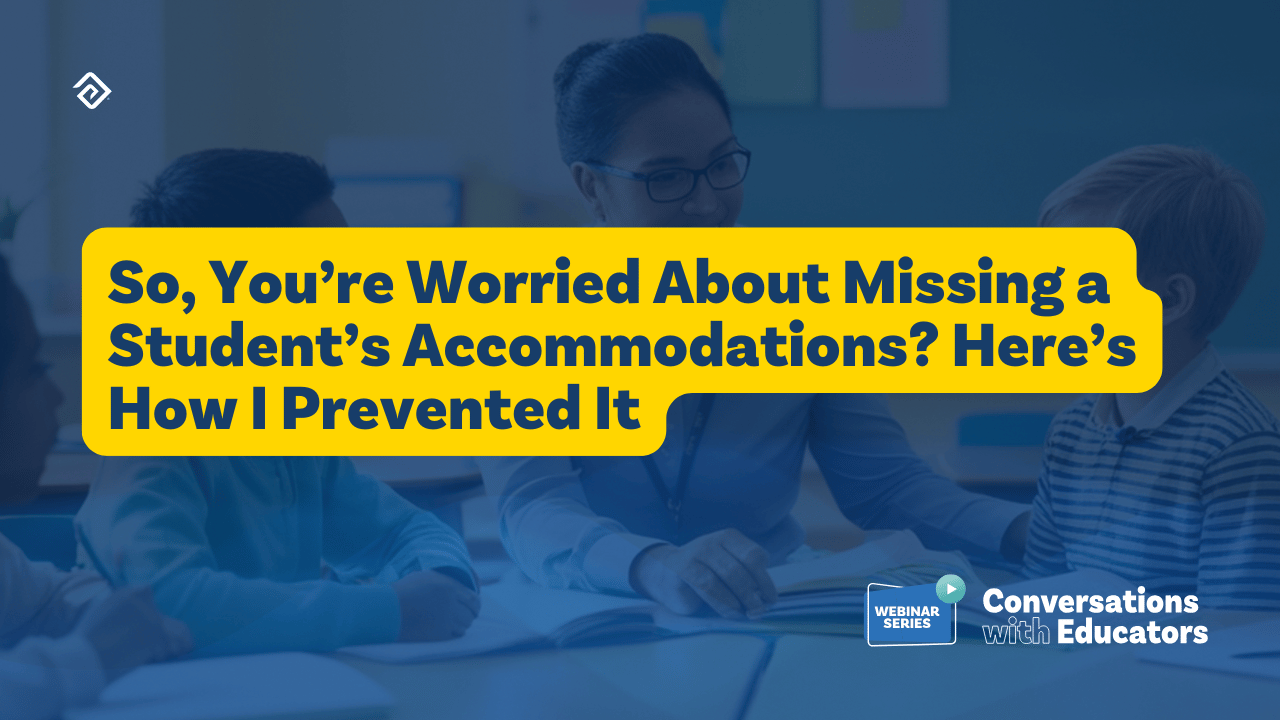EdTech Trends: Top 9 Trends in 2022
EdTech trends improve the educational experience for students and schools by creating new and exciting learning experiences and automating processes within schools. For the purposes of this article, we will broadly define EdTech as the technology used to support learning. Including, but not limited to, devices such as virtual reality headsets, laptops, tablets, interactive display boards, and software like a virtual meeting platform or a learning management system. Any digital tool that has the purpose of making learning more efficient, differentiated, and personalized for students or teachers is part of EdTech.
Characteristics of useful EdTech:
- Makes learning more accessible to students and accounts for differences in interests and learning styles
- Allows for greater choice to accommodate more student-centered learning
- Creates more possibilities for learning experiences by adding efficiencies and removing obstacles
- Makes the ideas educators have held for a long time a reality by providing the tools to make those ideas happen for students

What Are the Top EdTech Trends to Keep an Eye on in 2022?
1. More Efficient School Operations
As schools become more operationally complex and budgets have become smaller, many districts have switched to software solutions to help schools do more with less. Some of the most time consuming tasks within schools include:
High school master scheduling: Schools used to spend weeks, or even months, using whiteboards to organize students, teachers, and classrooms so students could get their preferred classes and graduate on time. However, master schedule software can now be used to automate scheduling and within a couple of days deliver 90% of students’ first choice classes.
Test accommodations for students: Planning and coordinating for testing of thousands of students across all states and local K-12 schools is extremely time consuming. When considering entering accommodations to meet a student's individual needs, it becomes even more time consuming, but it doesn’t have to be. With advances in technology, schools can now use test accommodation software to automate the process and generate reports that make sure each student receives the correct accommodations to meet their individual needs.
Curriculum mapping and planning: Teachers collectively spend thousands of hours making sure curriculum for students is aligned with state and national standards. Using new curriculum mapping software, teachers are now able to quickly analyze whether or not their curriculum is aligned with state and national standards as well as share best practice curriculum plans with other teachers to reduce duplication and with parents to keep everyone up to date. Curriculum mapping software allows educators to embrace the art and science of teaching, while ensuring students meet all the necessary standards.
2. Experiential Learning through VR and/or AR
The improvement and use of virtual reality (VR) and/or augmented reality (AR) is an EdTech trend to watch closely as it presents an enormous opportunity for teachers and students.
Learning is all about connections within the brain. Teachers design experiences for students to build background knowledge and connect to their previous experiences. In the past, teachers regularly used field trips as a tool for some of the most important topics. While students typically anticipate field trips as a fun and exciting learning opportunity, there is one major challenge: Field trips can be time consuming and expensive for the school.
The best places for field trips can be prohibitively expensive. Students who live on the west coast can’t easily take a field trip to Washington D.C. when studying the branches of the federal government. With VR / AR, students can efficiently and virtually travel to increasingly more places. Students can visit Mount Everest, the United States Capital, The Great Barrier Reef, the Great Pyramid and countless other places around the world. Through VR, for example, students can learn about the Ancient Egyptians by visiting famous archaeological sites!
VR / AR also provides opportunities for virtual labs, saving the expense of equipment and materials, while providing students hands-on experiences with experiments. In a VR lab, students can experience immersive and realistic lab situations that mimic industry and the places they will one day work. Students can explore learning environments that would be too dangerous for real life. The diversity of experiments and environments students experience through AR are much greater than would ever be possible in real life due to safety concerns and the cost to purchase, store, and maintain equipment.
VR / AR removes time and cost barriers and open opportunities for students to gain hands-on experiences that were not previously possible.
3. Collaborative Learning
A continuing EdTech trend is the use and improvement of collaborative platforms. Platforms like Google Meet, Microsoft Teams, and Zoom have opened up many possibilities to efficiently and easily connect and collaborate with people around the globe. It is now feasible for students to directly connect to primary experts in the field they are studying no matter where they live and work.
Students studying climate change could meet with Veerabhadran Ramanathan to ask about his discovery of the greenhouse effect of halocarbons. Students learning about communities can learn about different places around the globe when teachers connect their classes across the country and the world. Students studying the rainforest can collaborate with a class in Brazil and learn about the real impact of deforestation.
The improvement in collaborative platforms has increased the functionality and efficiency of learning. The improvements also impact teachers who can collaborate with colleagues with more flexibility, regardless of location. This is a boost to teacher teams, especially those with teachers with more restrictive schedules or those who are part of a small rural district in which they are the only teacher in their subject area or department.
Another exciting opportunity for teachers is to deeply collaborate with colleagues nationally and around the world. Many teachers rarely have the opportunity to attend national conferences and events. Those who can, may only attend once every few years. Through collaborative platforms, educators can become part of a learning network that regularly learns, coaches, and creates together. Having these opportunities is a huge boost for the professional development of educators.
4. AI / Machine Learning
Artificial Intelligence continues to grow in our daily lives and its presence will continue to grow in EdTech as well. Gartner, a leading information technology research and advisory company, predicts that 30% of content on the internet will be created by AI this year. As AI grows “smarter”, it opens doors to new possibilities for education. AI is currently used in many software programs that responds to student input and provides differentiated content based upon the response. Growth in AI will increase the efficiency and complexity of the interaction with software, allowing the software to provide a more personalized learning experience for each and every student to best meet their individual needs.
Not only will AI impact how students are learning, but it will also become an increasingly important subject of study. The demand for people who understand and can program for AI will be a critical work area. Additionally, with AI replacing traditional occupations, teaching students to have the flexibility to adapt and learn new skills will become even more important in school curriculums.
5. Game-based Learning
Games have always been a tool used by teachers to make learning fun and engaging. Whether participating in a game show format or creating competitions out of learning, games are often motivating for students. Early computer games like Oregon Trail created novel learning opportunities for students, but today’s games take gamified learning to a different level.
Some games were created specifically for the education setting. These games provide students the chance to build avatars, conquer challenges, and compete against others while mastering learning objectives. Other games created for entertainment, like Minecraft or Roblox, have been co-opted by educators or modified by the creators to meet the demand of game-based learners. Since motivation is key to learning and video games are highly appealing to many children, expect game-based learning to continue to be a growing EdTech trend.
6. Flexibility in Learning Delivery
Schools are likely to continue offering flexible learning delivery models including asynchronous and self-directed options. Pre-COVID pandemic, choice in learning delivery was limited. Although a lot of the technology that would allow choice existed, teachers did not always know how to use it and most schools did not consider widely offering choices of learning delivery.
However, students recently have been experiencing different learning delivery methods and finding success with something different than what was traditionally offered. Expect schools to continue to offer asynchronous learning opportunities, more self-directed or AI enabled on-line options, and choices for students to direct their learning paths. Teachers are also likely to use what they learned to blend their learning approaches for students, regularly adjusting the delivery style that works best within a particular course and learning content.
7. Increasing Awareness of Big Data
Big data, information gathered about everything we do online, is a big part of our lives. Big data is helpful and important for AI based learning programs, however, many programs offered for free or at low cost to education institutions do so because the company is interested in the data they will gather from the users. Over time, some parents and schools may become more cautious about the data they are providing to corporations.
8. Increasing Presence in the Upskilling Market
Working for one company, in one role for an entire career is very uncommon. As technology continues to rapidly change our world, the need for people to “upskill,” or to adapt to the changing demands of the workforce will become even more important. Both employers and workers will drive the demand, as employers work to keep their workers’ skill set current, and workers navigate better employment opportunities. Expect EdTech to capitalize on the high demand, increasing its presence in the upskilling market.
9. Big Investment, Therefore More Products and Services Coming in EdTech
Investment in EdTech is increasing dramatically and with all of the trends described above, there will be movement, improvement, and growth. Over time there will be new additions to the list that we haven’t thought of yet. With around $20 Billion in investment in each of the last two years, expect new and improved products that will continue to change the educational world.
Final Words
EdTech is dramatically changing the way students are educated as well as how schools are run. If your school is interested in automating tasks and streamlining processes which give back time to staff and students to focus on learning, Education Advanced can help.
Testhound, our test accommodation software, helps schools coordinate thousands of students across all state and local K-12 school assessments while taking into account accommodations to meet individual student’s needs.
Request a demo of our software today or contact us here to see how we can help you streamline your school operations.


More Great Content
We know you'll love




